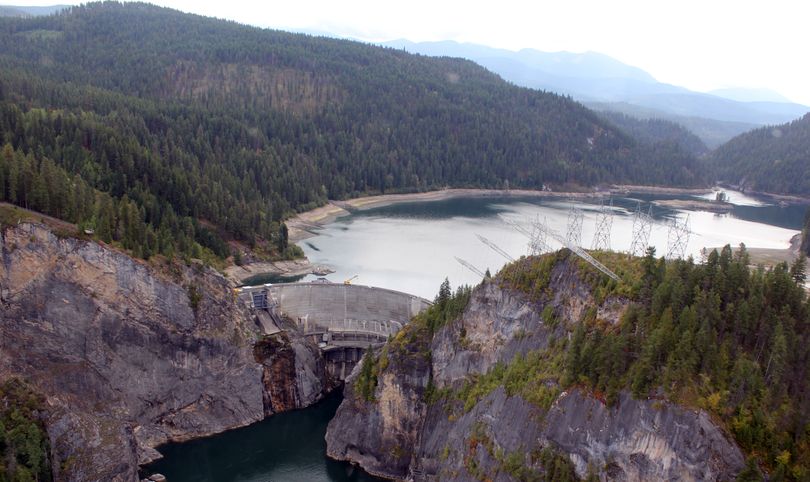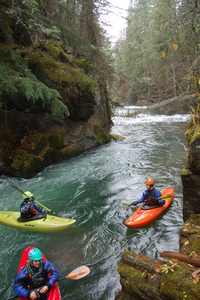Boundary Dam relicensing approved; Millpond removal OKed

RIVERS -- The Federal Energy Regulatory Commission has approved a new 42-year license for Boundary Dam on the Pend Oreille River downstream from Metaline Falls. Boundary, built in 1967, is the largest hydroelectric dam owned by Seattle City Light and produces 25 percent of the city's electric power.

Recreationists will benefit from several conditions of the relicensing process and negotiations, underway since 2004. Kayakers in particular are applauding the concurrent federal approval for removing Millpond Dam on Sullivan Creek, a tributary to the Pend Oreille River.
Millpond Dam is a 134-foot-long, 55-foot-high concrete dam with an 850-foot-long, 10-foot-high earthen dike that creates a 63-acre reservoir just downstream from Sullivan Lake. Millpond Dam has blocked Sullivan Creek since 1909.
The Washington Department of Ecology approved a permit for dam removal last year.
Removal should be completed within the next five years.
Dam removal settlement talks began in 2008 when American Whitewater, the US Forest Service, and the State of Washington successfully challenged a federal decision to give up jurisdiction over the dam, which had not generated power since 1956, according to Kevin Colburn, writing on the American Whitewater website.
Seattle City and Light eventually agreed to a settlement in March of 2010 to fund the removal of Millpond Dam as a condition for relicensing Boundary Dam.
- New recreational trails on the east side of the reservoir.
- New non-motorized boat access with parking and facilities at the Metaline Falls Portage.
- Upgrades to six dispersed recreation sites along the Boundary reservoir, including sanitation systems, picnic tables, fire rings and watercraft land and tie-up areas.
- Improvements to Metaline Park in the town of Metaline.
- New interpretation and education sites throughout the Boundary project area.
The removal of Millpond Dam also is expected to benefit native redband and cutthroat trout, as well as mountain whitefish, by improving stream temperatures, restoring sediment to the areas downstream of the dam, and likely restoring fish passage.
In addition, the dam removal will expose whitewater rapids not seen for over a century. American Whitewater produced images predicting what the restored area might look like.
“Our re-licensing process was unique,” said Seattle City Light Superintendent Jorge Carrasco. “We undertook a process of close collaboration with all stakeholders to reach an agreement for the protection and enhancement of native fish and wildlife; the expansion of recreational and cultural amenities; and to ensure the water quality of the Pend Oreille River and its tributaries.”
- Began generating power in 1967
- Cost to build: $94 million
- 740’ long and 340’ tall
- A thin-arch structure, it is 32’ thick at the base and just 8’ thick at the crest
- Produces up to 1,040 megawatts of power
- Details can be found on the gage description secion of the AW Sullivan Creek webpage.
